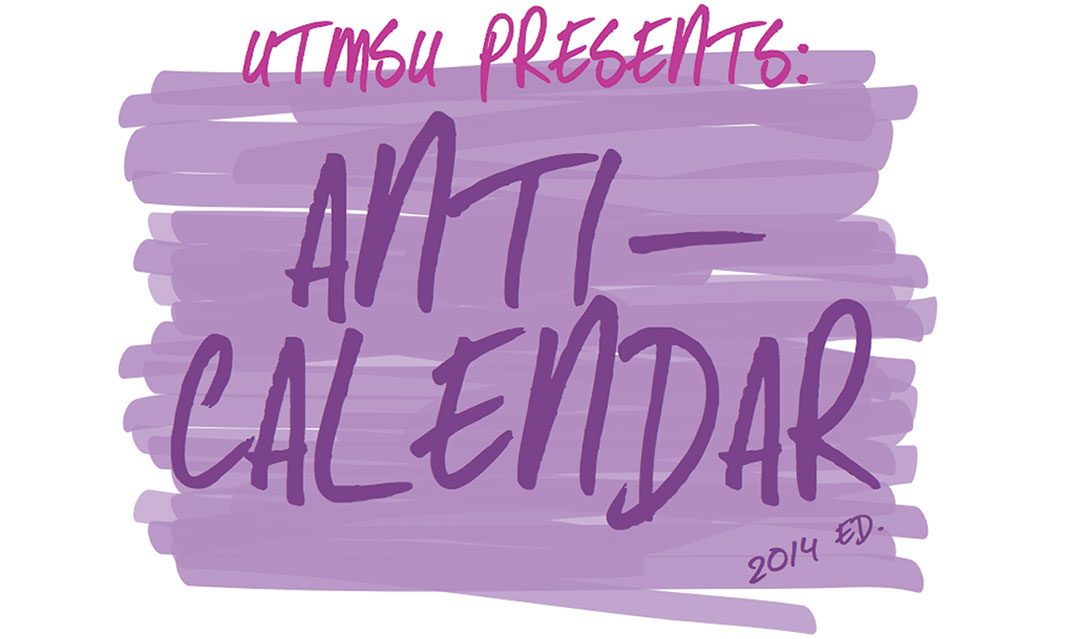2017 has its first reboot: The Anti-Calendar.
The Anti-Calendar is a collection of course evaluations completed by previously-enrolled students. By aggregating data from completed course evaluations, the Anti-Calendar provides useful numbers, which include: the number of students enrolled in the class, the number of survey respondents, and whether students would want to retake the course. There are also eight available categories, such as whether the material was stimulating, difficult, what the atmosphere was like, and so on.
Using the data present in the Anti-Calendar, it’s easy for students to assess how difficult a course may be, and thus decide whether they want to go ahead with it or not. For some students, taking a course isn’t a choice, as it may be a mandatory requirement for their program. In cases such as these, students can at least be better informed of what they’re walking into, and can plan to dedicate time accordingly, or even take the course during a lighter term, or in the summer. Students may even go a step further and evaluate whether they would like to take a course with a certain professor—or avoid them at all costs.
Last week, UTMSU’s Facebook page announced that archives starting from 2014 will be made available. While the release of these Anti-Calendars may not be of any help to students currently enrolled in courses for this semester, it will hopefully help guide students through future course selections.
According to a 2008 article (titled “Anti-Calendar returns to UTM”) in The Medium, the Anti-Calendar was first introduced to UTM in 1987. While the calendar is generally expected to be published every year, it has had an inconsistent track record. For example, following a publication in 2005, the Anti-Calendar was not published again until 2008, where two batches (2007/2008 and 2008/2009) were to be released in the same year. (However, it is unclear whether these two batches were even released.) It is understandable why it would take time: there are hundreds of course evaluations for simply one course, and every academic department has multiple courses. All data must be aggregated, and then the Anti-Calendar itself must be compiled. As UTM continues to add more courses, this task certainly gets harder every year.
While the Anti-Calendar is an honest account of what students felt about their courses, there are a few potential loopholes present in the use of this resource.
Similar to the RateMyProfessor website or a “Bird Courses” group on Facebook, students should not rely on Anti-Calendar as a primary source in making decisions about which courses to pick for the next year. Firstly, the fraction of students who have responded to the course evaluation survey is quite variable, and is generally on the low end (i.e. less than 40 percent). Secondly, it should be kept in mind that it is the most vocal students who are more likely to fill in course evaluations, i.e. those who have enjoyed the course/instructor’s style, or alternatively, hated the course. The survey is not an accurate representation of the course—simply because some students thought the course was fine (thus didn’t have any strong opinions to share), and therefore may not have been motivated enough to fill the survey, or didn’t believe that their opinion would make a difference.
For example, according to the newly released 2014 Anti-Calendar, DRE121H5F (Traditions of Theatre & Drama) had a total enrolment of 43 students, but a response rate of only 39 percent (i.e. approximately 16 students filled in the course evaluation). Out of these 16 students, 76 percent recommended retaking the class. Is this class a good learning experience—or did those students enjoy the class so much that they happily filled in the course evaluation to show their appreciation for the instructor? It’s hard to tell.
Alternatively, ENG461H5F (Advanced Studies in British Literature to the 19th Century) had a total enrolment of 13 students, with a 100 percent response rate, where 96 percent of students recommended retaking the class. This would be an ideal course to select—based entirely on the Anti-Calendar’s data.
Interestingly, some professors constantly remind students to fill in their course evaluations and may even tempt students to fill them in with the promise of a small bonus to the final grade. On the other hand, others do not even mention course evaluations, leaving it up to the students to fill in. Both occurrences can affect the total number of course evaluation responses.
It should be kept in mind that what works for one student may not work for another. Certain instructors’ teaching methods may cater to a variety of learning styles. Similarly, what may seem like a bird course to one student may not be one for you.
Another key thing to keep in mind is that course evaluations are anonymous. While this anonymity may grant students a safe space to share thoughts they may not be comfortable with sharing with their name attached to it, it can also tempt students to fill in the survey randomly, or even provide a “revenge rating,” i.e. choose the “worst” options to get payback for a course that’s going poorly.
The Anti-Calendar is a resource meant to complement future course selection. On the bright side, if the Anti-Calendar is consistently compiled for the next few years, it could increase the number of course evaluation responses, allowing for a more accurate representation from the student population, and even spark a change in courses.



